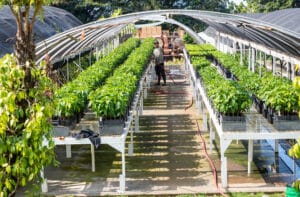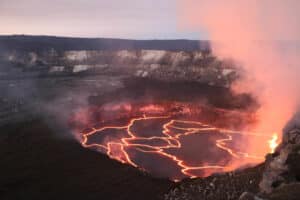Lahaina, once the historic heart of Maui, is a place where every street corner has a story — from royal Hawaiian heritage to bustling art galleries, breezy oceanfront eateries, and legendary sunsets. But after the devastating Lahaina fire in August 2023, this cherished coastal town faced unimaginable loss. Today, Lahaina is rebuilding. As part of the broader recovery strategy, projects focusing on affordable housing are being prioritized to aid displaced residents. But there is still a long way to go.
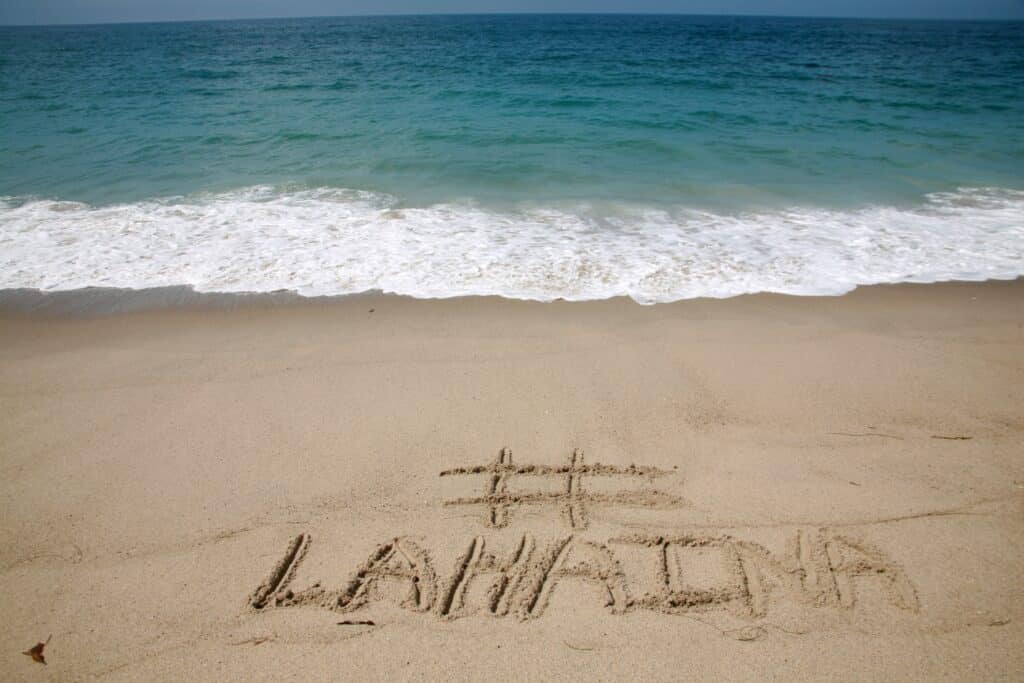
Lahaina Strong (Shutterstock)
The Lahaina Fire: A Community Shattered by Maui Fires
In August 2023, a devastating wildfire tore through the historic town of Lahaina on Maui’s western shore. Fueled by the perfect storm of hurricane-driven winds, dry conditions, and delayed emergency response, what began as a small brush fire quickly escalated into one of the deadliest natural disasters in Hawaii’s history.
Within hours, the flames engulfed the heart of Lahaina, a town once alive with restaurants, art galleries, mom-and-pop shops, and cultural institutions. More than 100 lives were tragically lost, thousands of residents displaced, and centuries of Native Hawaiian history reduced to rubble.
Beloved landmarks — including the Lahaina Heritage Museum, the historic Lahaina Courthouse, and the locally treasured Lahaina Beach House — were wiped off the map. Even the iconic 151-year-old banyan tree, a longtime symbol of resilience and community spirit, stood charred and wounded. But even from the ashes, stories of aloha, courage, and community emerged.
“It’s hard to describe the heartbreak of seeing Lahaina Maui like that. My grandma’s home was gone. My childhood beach spot, gone. But the people — our people — still stand,” shared @AlohaIsHome on Instagram.
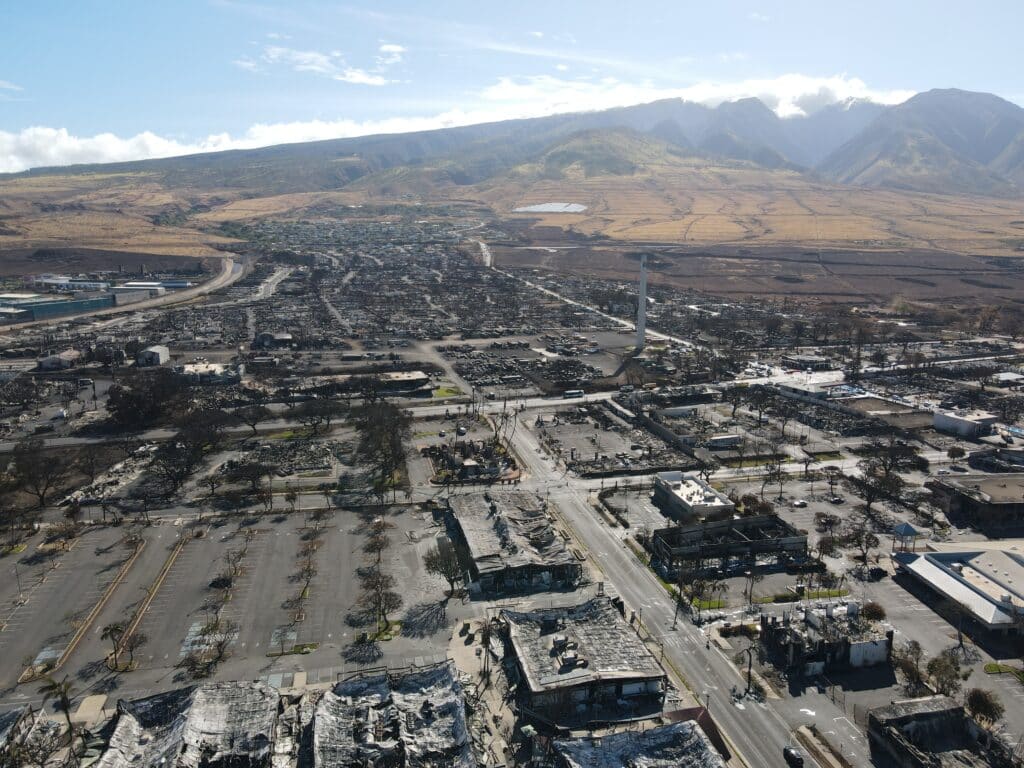
View of Lahaina After the Wildfire (Shutterstock)
Lahaina Today: Slow but Steady Recovery
Efforts are underway not only to honor what was lost but to lay the groundwork for a stronger, safer future. Plans include upgrades to Lahaina’s infrastructure, better emergency preparedness, and restoring cultural landmarks. Local organizations are leading the way, providing financial aid, housing support, and business recovery grants. Places like the Royal Lahaina Resort stepped up to provide shelter for displaced families and emergency responders.
Many residents are involved in community-led planning to ensure Lahaina is rebuilt with cultural respect and sustainability. This includes meeting with Native Hawaiian leaders, environmental experts, and longtime local families to guide future development.
Visit Hawaii Community Foundation’s official site to learn more about recovery efforts.
Emergency Preparedness
The Maui Emergency Management Agency (MEMA) plays a pivotal role in safeguarding the island and its residents from natural disasters. Working closely with state and local authorities, MEMA ensures that Maui is equipped to handle wildfires, hurricanes, tsunamis, and other potential threats.
To better prepare for future emergencies, MEMA has deployed new state-of-the-art fire sensors to detect potential threats earlier and automatically alert authorities for faster, more effective responses. MEMA has also expanded its team, including the appointment of a new administrator, to enhance coordination and ensure more streamlined efforts.
Collaboration is at the heart of MEMA’s strategy. The agency works hand-in-hand with the Maui Fire Department, Maui Police Department, and other cooperating agencies to ensure a unified and effective response to emergencies. MEMA’s comprehensive emergency management plan outlines strategies for prevention, preparedness, response, and recovery tailored to the unique challenges of the Hawaiian Islands.
Regular training exercises and drills are conducted to keep emergency responders prepared for any situation. MEMA also prioritizes community education, working closely with residents to promote a culture of resilience and preparedness.
Lahaina Restaurants Lost — and Reimagined
Lahaina, once a vibrant culinary hub on Maui, lost more than just buildings in the fire — it lost flavors, stories, and gathering places woven into daily life. Beloved local staples like Nagasako Okazuya Deli and Fleetwood’s on Front Street were reduced to ashes.
For many, these weren’t just restaurants — they were where first dates happened, where generations gathered after the beach, and where locals and visitors alike felt the pulse of Lahaina’s unique spirit. Their loss is a reminder that food is never just about what’s on the plate — it’s about the people, the memories, and the moments made around it.
But something beautiful is happening. Chefs and staff from lost restaurants are finding new life via food trucks, pop-ups, and temporary kitchens across Maui. Restaurants like Māla Ocean Tavern, Star Noodle, and Honu Oceanside have reopened.
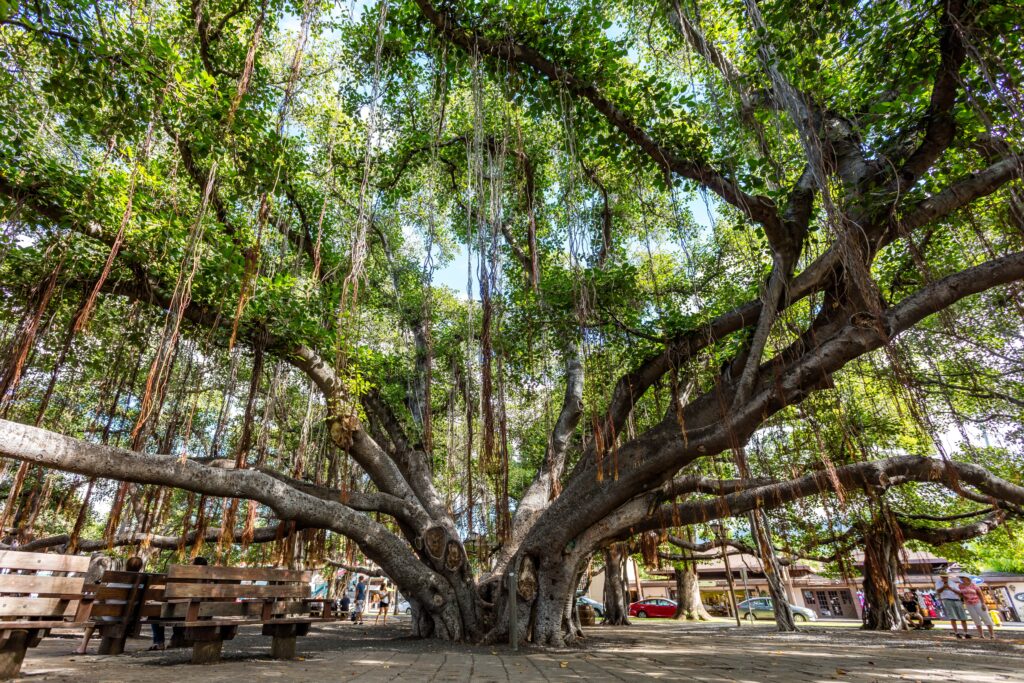
The Historic Banyan Tree in Lahaina in 2017 (Shutterstock)
Is Lahaina Safe to Visit?
Travelers often ask: “Is it safe to visit Maui after the fire? Is it okay to travel to Hawaii now?”
The answer, from many residents and local leaders, is yes — with care, respect, and purpose. Visitors play a vital role in helping Lahaina recover — not just economically, but emotionally. Your presence, when guided by empathy, provides jobs, sparks hope, and keeps the spirit of aloha going as they rebuild.
Here’s how you can travel responsibly to support Lahaina today:
1. Choose Conscious Accommodations
When booking a stay, look for Lahaina hotels and resorts that are committed to the community. Some offer special packages where a portion of the proceeds support local relief funds. Others are housing displaced families or donating meals to recovery crews.
2. Spend with Intention
Many Lahaina restaurants have launched food trucks or pop-ups in other parts of Maui. Seeking them out is a powerful way to support displaced chefs, servers, and kitchen staff while getting a unique culinary experience. Look for local businesses at farmers’ markets, community events, and new temporary kitchens. Visit local marketplaces instead of big box stores. Shops in Wailuku, Upcountry, and Kīhei are filled with artisans, many of whom lost Lahaina storefronts.
3. Take a Give-Back Tour or Volunteer
Many tour operators are now offering give-back opportunities as part of their package. You might combine a waterfall hike or snorkel tour with a donation to relief efforts or spend a few hours helping a community garden that supplies free meals.
- Volunteer through Maui Nui Strong or local nonprofits.
- Deliver supplies or offer skills like photography, art, or child care where needed.
4. Respect What’s Off-Limits
Some parts of Lahaina Maui are still closed or restricted. Don’t photograph or enter these areas unless invited. Respect signage and local requests.
As @MauiHeartline posted on Facebook: “The best support is sometimes quiet. Sit with us. Share a meal. Don’t look away from the pain — but don’t try to fix it, either.”
5. Educate Yourself on the History of Lahaina
Lahaina was once the capital of the Hawaiian Kingdom. Visiting with cultural awareness matters.
- Explore historic sites on Maui.
- Visit Maui Historical Society to learn about Maui’s aliʻi and Lahaina’s past.
6. Spread the Word Thoughtfully
Use your social media to spotlight resilience. Tag local businesses and use hashtags like #LahainaStrong and #RebuildWithAloha. Always ask permission before sharing photos of people or sensitive areas.
7. Don’t Cancel — Reschedule or Redirect
If you have plans in Lahaina, rebook for a future date or stay elsewhere in Maui instead of skipping the trip. Your presence still makes a difference in economic development.
“Don’t abandon us. Redirect. Reconnect. Still come — with care.” —@KauaiToMaui, Instagram
8. Donate If You Can
If you’re not planning a trip right now, you can still help by donating to organizations like:
Honoring the Past, Protecting the Future
Lahaina was once home to royalty and a center of whaling and trade. The fire didn’t just destroy buildings —it erased tangible history. That’s why cultural preservation is central to the rebuild. Groups like the Lahaina Restoration Foundation are salvaging artifacts and creating digital archives. The hope is to create a new museum honoring the old town’s legacy.
Rooted in Hope
The spirit of Lahaina Hawaii is far from gone. It’s in the determination of its people. In the green shoots of the banyan tree Lahaina. In the laughter rising from community kitchens and the gentle crash of waves along the shore. By choosing to support Lahaina restaurants, hotels, and cultural efforts, you become part of something bigger — a legacy of resilience, aloha, and hope.




